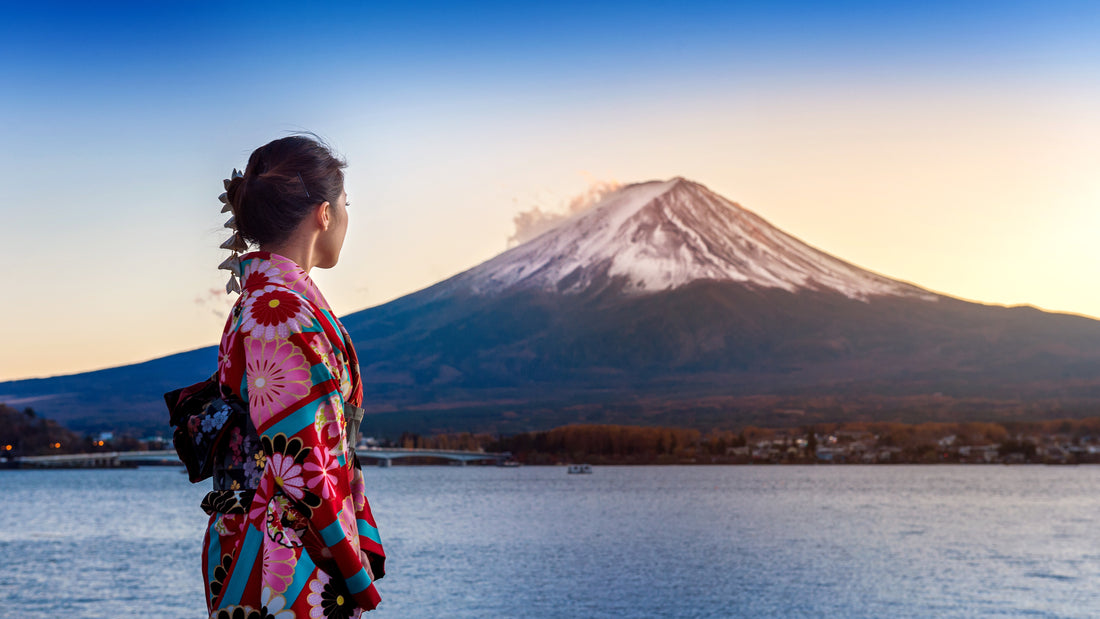
The Mystery and Beauty of Mount Fuji: Japan's Sacred Mountain
Share
Amidst the breathtaking natural beauty of Japan, Mount Fuji stands as a symbol of strength, spirituality, and unmatched beauty. Known as the most iconic mountain in Japan, Fuji not only attracts tourists but also holds countless stories and deep meanings that have inspired Japanese culture for centuries.
Standing at 3,776 meters, Mount Fuji is not only Japan's highest peak but also a significant spiritual and cultural symbol for the Japanese people. Located at the border of Yamanashi and Shizuoka Prefectures, this majestic mountain offers stunning natural beauty and holds great significance in both Shinto and Buddhist traditions.
A Cultural and Spiritual Icon

Mount Fuji is regarded as a sacred place in Shinto, believed to be the dwelling of gods. Numerous shrines have been built around its base as a form of reverence. Climbing to the summit of Fuji is also considered a spiritual journey toward enlightenment. The Fujiko religious sect views ascending Mount Fuji as a means to attain purity. Additionally, the phenomenon of sunrise from the peak, known as "Goraiko", symbolizes rebirth and new hope.
Natural Beauty and Tourist Activities

The natural beauty of Mount Fuji is a major attraction for visitors. Whether it's the snow-covered summit in winter or the backdrop of cherry blossoms in spring, Fuji provides the perfect setting for photographs. Lake Kawaguchi, located at the foot of the mountain, offers stunning views with a perfect reflection of Mount Fuji. Climbing Mount Fuji is a popular activity, especially during the summer months (July to September). Trails, such as the Yoshida Trail, are equipped with resting spots and other facilities. Many climbers choose to ascend at night to witness the spectacular sunrise from the summit.
Unique Features of Mount Fuji
Mount Fuji has several unique characteristics that add to its allure:
- A higher peak: The Kengamine peak of Mount Fuji is slightly higher and considered even more sacred in Shinto traditions.
- Active volcano: Although it last erupted in 1707, Mount Fuji remains an active volcano, closely monitored for any signs of activity.
- Weather station at the summit: There is a weather station at the summit to observe atmospheric conditions, making it a site for extreme weather observation.
- Fuji Rivers: Several small rivers flowing from Mount Fuji are considered sacred and play an important role in the local ecosystem.

Mount Fuji in Art and Literature
Mount Fuji has also served as a source of inspiration in various forms of art, from Hokusai's famous painting, "The Great Wave off Kanagawa", to Japanese literature. Fuji often appears as a symbol in haiku poetry and stories that depict the beauty of nature and the connection between humans and the environment.
A World Heritage Site
In 2013, Mount Fuji was recognized as a UNESCO World Heritage Site, acknowledging its extraordinary cultural and spiritual value. This recognition further enhances Mount Fuji's status as an international tourist destination and a source of national pride for Japan.
Conclusion
Mount Fuji is more than just a mountain. It is a symbol of beauty, natural power, and spirituality in Japan. From the breathtaking sunrise phenomenon to the meaningful act of climbing, Mount Fuji offers an experience that connects people with the universe. As a cultural icon and a World Heritage Site, Mount Fuji continues to attract tourists and remains a place of deep significance for the Japanese people, who revere it as the deity of nature.
